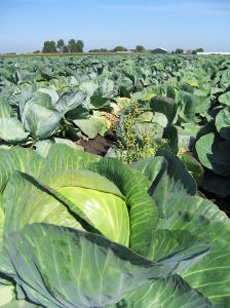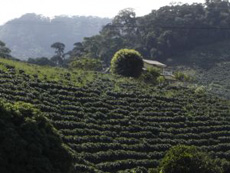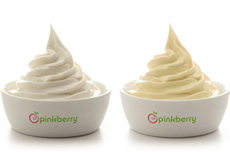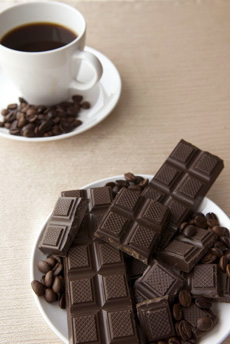| As Gordon Gekko said, “Green is good.” He just didn’t understand which green was going to become the big focus. In a National Restaurant Association survey of trends for 2009, environmentally friendly equipment and sustainable practices topped chefs’ lists of hot trends and top cost-savers. Green practices, organic, sustainable and local foods are also on consumers’ list of wants. So the Environmental Defense Fund and Restaurant Associates have developed Green Dining Best Practices that enable restaurants, corporate cafeterias and museum eateries across the country to spare the environment as they lower their foodservice costs. Overarching goals include reducing the greenhouse gas footprint and re-engineering the menu to provide more local and organic vegetables, sustainable meat and seafood.
A comprehensive set of science-based recommendations for environmentally friendly foodservice, the practices have been tested for 90 days by two Restaurant Associates clients, Random House and Hearst Corporation, which have large corporate cafeterias in New York City. Early results show annual benefits of more than $85,000 in cost savings, a reduction of 275 tons of carbon pollution and a reduction of landfill waste by 60 tons, among other environmental benefits. You can get them free of charge at www.edf.org/greendining. |
|

Organic cabbage. Photo by Herman Hooyschuur | SXC. |
|
The pilot program revealed some interesting answers:
Eat seasonal, local foods. Eating seasonal produce from local farmers can have a lower environmental impact than buying organic. Local foods reduce greenhouse gas by transporting the foods short distances. Organic foods save the environment from pesticides, but require more fuel to transport food greater distances.
Use traditional dishes. Some disposable plates and flatware labeled “recyclable” and “compostable” are so only in theory; many are not made in the U.S., and U.S. municipalities do not have the equipment to recycle or compost them. Plus, when these products go into landfills, they give off greenhouse gas. Using soap, water, traditional, dishes and flatware has a lower environmental impact.
Turn off appliances not in use. In commercial facilities, coffee urns are a huge energy drain; they tend to be left on all day. They should be turned off or put on timers to save energy. (At home or in a small office, pull the plug out after you’ve finished brewing. Coffee in a glass carafe on the warmer plate gets scorched after 15 minutes. Get a coffee maker that brews into a thermal carafe.)
Half of the waste in a restaurant is food waste. An anerobic “digester” breaks the waste into liquid form, which saves an enormous amount of money and fuel over carting away traditional garbage. (Tours were available to see it in action.)
Lunch served from Random House’s new green kitchen was so delicious. We ate two plates of everything and only regret we didn’t bring Tupperware to take more home. We share it with you for recipe ideas—which just happen to be largely vegan:
Salad of organic farro, organic spring onion, roasted organic fennel and organic preserved lemon.
Field-grown mâche (in season—not greenhouse-grown which uses energy), shaved organic watermelon radish, and diced plum, with watermelon vinaigrette.
Organic tricolor cauliflower salad (white, orange and purple cauliflower)—so beautiful, even kids will eat cauliflower without question. Orange cauliflower, a mutant, contains 25 times the level of vitamin A of white varieties. You can also find green cauliflower.
Salad of marinated and roasted organic wild mushrooms: trumpet, nameko and maitake mushrooms, on a bed of baby arugula (see our Mushroom Glossary).
Salad of shredded organic escarole, organic white beans, sheep’s milk Pecorino and roasted organic sweet peppers.
Salad of organic quinoa, sugar snap peas, organic spring peas and organic grilled spring onion, with an organic green garlic dressing.
Cheeses: (1) Fresh goat tomme from Vermont Butter & Cheese, a NIBBLE Top Pick Of The Week. One tomme was coated in fresh-snipped dill, one in a finely-ground black and pink peppercorn and fresh parsley mix, set on a plate atop extra virgin olive oil. (2) Another NIBBLE favorite, Old Chatham Sheepherding Company’s sheep’s milk Camembert and sheep’s milk Roquefort-style cheese. All cheeses were slices of heaven. Accompaniments included organic apricots, figs, dates, almonds and honeycomb, plus beautiful artisan breads and crackers, including a raisin walnut loaf and long, soft breadsticks we’ve got to track down!
Incredibly buttery, melt-in-your-mouth brownies and excellent organic coffee from Seattle’s Best Coffee, organic tea and iced tea from Harney & Sons. Plus, lots of infused water: with thin-sliced cucumbers (our favorite), blueberries, supremed and sliced oranges, and thin-sliced lemon. Just add the fruit to a pitcher of water—about a cup of fruit per pitcher.
With gorgeous food like this, it’s easy to be a vegetarian. But the two executive chefs involved with the pilot had more in store for us.
Chef Nick Cavaretta of Random House presented seared Arctic char with an arugula pesto, topped with organic red amaranth microgreens. This is an easy (and healthy) dish to make at home. You can buy excellent pesto (including arugula pesto); if you can’t find red amaranth microgreens, substitute what you can find, or the prettiest sprouts.
Chef Jayson Brown of Cafe57 at Hearst smoked Eberly Farm organic chicken over hickory chips. He served it on top of a snap pea purée and a side of diced fingerling potatoes and pea sprouts.
We were thrilled to have enjoyed this sustainable lunch—and more thrilled that within two years, the 110 foodservice facilities managed by Restaurant Associates will be green (and audited by the Green Restaurant Association!). Now, everyone else: Get into the act! If your company has a cafeteria, if you know people who own restaurants, download and forward the Green Dining Best Practices from www.edf.org/greendining. |
|



